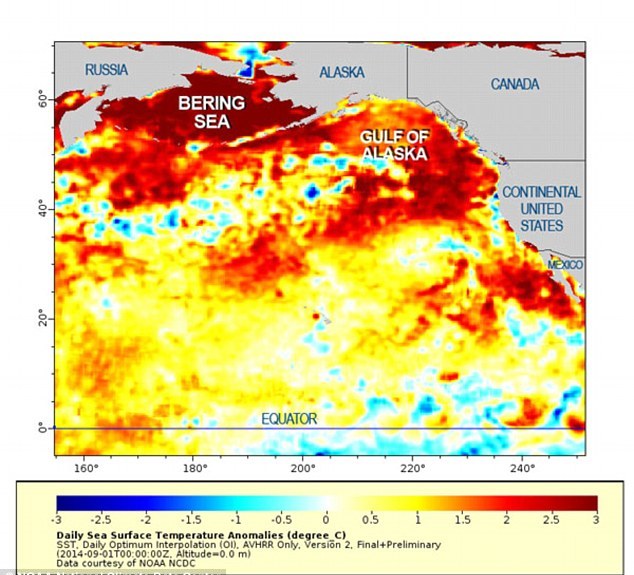How Arctic Sea Ice Loss Could Make The Pacific Hot Blob A Permanent Feature Of Our Future
From the North Pacific to the tropics, loss of sea ice will result in a vastly heated Pacific Ocean in which events like the recent Hot Blob become far more common. Those were the conclusions of a new model study conducted by Wang, Deser, Sun and Tomas and recently published in Geophysical Research Letters.
(Understanding how sea ice loss in the Arctic can result in large-scale Pacific warming.)
An ocean heating event called the Blob resulted in mass loss of sea life during the period of 2013-2014. It was associated with a towering high pressure ridge in which the upper level winds ran far to the north and into the Arctic. Beneath the ridge, temperatures both at the land and ocean surface grew to be much warmer than normal.
Though viewed as a fluke by some, many began to draw connections between the powerful ridge feature, the related Pacific warming, and sea ice loss in the Arctic. Now, a new scientific study using climate models has produced some rather telling findings. First, the study found that Arctic sea ice loss results in large scale Pacific Ocean warming within just 10-20 years of widespread Arctic Ocean ice reductions. Second, the study models indicated that warming occurred first and strongest in the North Pacific, but then rapidly translated toward the Equator.

?w=600&h=544
(Sea surface temperatures across the North Pacific were much warmer than normal during the hot Blob event of 2013-2014. A new model study finds that sea ice loss will make such extreme events common.)
The reason for this change in planetary and Pacific Ocean energy balance is scientifically described as a teleconnection. In very basic terms, loss of sea ice at the Arctic Ocean surface produces changes in local wind patterns that ripple through the global atmosphere. After a rather short period of time, wind patterns in the upper levels of the atmosphere and at the surface in the Pacific Ocean become involved.
EDIT
https://robertscribbler.com/2018/06/21/how-arctic-sea-ice-loss-could-make-the-hot-pacific-blob-permanent/
 ?w=600&h=544
?w=600&h=544